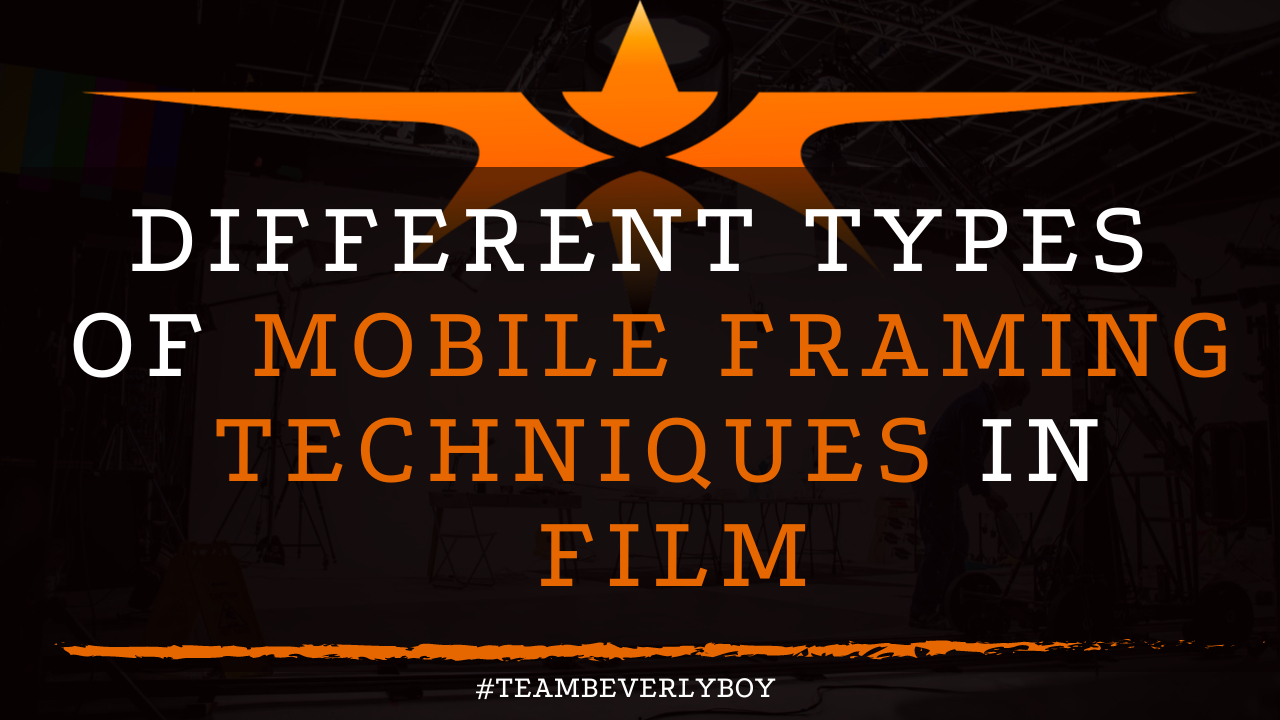
Different Types of Mobile Framing Techniques in Film
To the naked eye, a film may be a powerful image that is exciting and fun to watch, but the audience pays little mind to the resources, skills, and technique that go into creating the video. Each film shot is actually an incredibly complex unit which is the foundation for the film segments that are ultimately the foundation for a movie.

mobile framing techniques in film inquiry!
The framing and composition of each shot represent important concepts through which power and meaning are added to produce the desired visual outcome. With various types of Mobile Framing Techniques in Film, including pan, tilt, tracking, and crane shots the parameters of the shot are altered to create endless possibilities for the camera.
Panorama (Pan)
The Panorama or (pan) shot is one of the simplest methods of mobile framing in film. This type of mobile framing technique occurs when the camera is rotated on a vertical axis such that there is an impression of the frame presenting a horizontal scan of the visual space. When the camera pans, it doesn’t actually move to a new position but instead, on screen it appears as if the cinematographer (and the camera) have turned its head either left or right. Think of it literally as looking left or looking right without any other imposed movement occurring.
Pan shots represent one of the most frequently used types of Mobile Framing Techniques in Film along with tilts, tracking shots, and crane shots. Together, these types of mobile framing techniques can provide virtually any of the framing required, but there are so many other ways that mobile framing can occur – for instance, the camera could do a somersault if that’s what the cinematographer decided was best for the shot.
Tilt
When the camera tilts it doesn’t actually change position but it does rotate on a horizontal axis such that its “head” or viewpoint will swivel up or down. Like the pan, tilt is a very common type of mobile framing technique that is used in filmmaking. As the camera rotates on its horizontal axis the impression on screen is that of a space that seemingly unrolls from top to bottom or vice versa. The use of tilt allows the unveiling of space low to high or high to low such that the audience might see more of a particular visual onscreen.
Tracking Shot
Capturing a tracking shot one of the more unique types of Mobile Framing Techniques in Film which comes by many names including the dolly shot or trucking. Unlike the pan and tilt, with this type of Mobile Framing Techniques in Film the entire camera can and will move. In fact, the camera travels in any direction along the ground so that it creates the sense for the spectator that they are moving with the camera. Not only can tracking shots move forward and backward, they can also operate cyclonic so that they actually shift in a circular manner. In fact, the dolly shot can even move diagonally, side-to-side or in one of several potential ways so that figures remain in the same relationship to the frame.
The tracking shot allows us to see the object from various different perspectives. The use of this particular technique allows the cinematographer to visually create volume and depth among the background in which the object is positioned.
Crane Shot
The crane shot represents one of those types of Mobile Framing Techniques in Film which requires essential equipment but which can be used to create powerful visuals that your audience is definitely going to remember. This shot involves the camera moving above ground level such that it can rise or descend over the subject and other viewable elements within the frame.
Crane shots typically can be captured with equipment that allow for easy mechanical adjustment. An arm lifts and lowers the camera so that it can adjust up and down, as well as sometimes also forward or backward and side-to-side in relation to the objects within the frame. On an entirely more upscale or big budget level, the crane shot may be produced from a helicopter or airplane!
Handheld Shot

The handheld shot represents the positioning of the camera such that it is held in the hands and used to produce a shot similar to the tracking shot. The handheld shot does provide a lot of flexibility for the cinematographer to adapt and reposition the camera in a number of different ways. The primary difference here is that there is no instrument or equipment used to steady or otherwise adapt the camera. It is entirely handheld.
Steadicam Shot
A popular type of mobile framing techniques that has certainly gained attention in the immediate past, the Steadicam shot represents a newer technique that is only made possible through the use of specialized equipment. The Steadicam creates footage that forms the illusion of objects within the frame adjusting in a smooth, very balanced fashion. Specialized equipment provides the cinematographer a means by which they can create powerful mobile framing using the Steadicam and their expertise.
As you can see, this and other types of Mobile Framing Techniques in Film can be used to alter the positioning of the frame within respect to the framed material such that we can see ourselves moving along with the frame. It’s a powerful technique that is used to approach objects, retreat from them, or otherwise circle them or move past in each shot captured.


